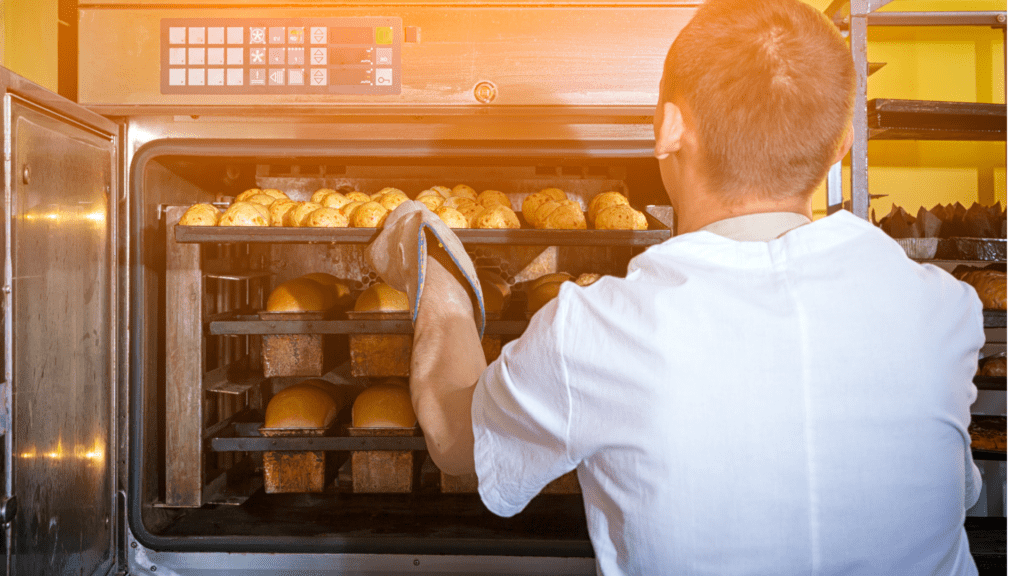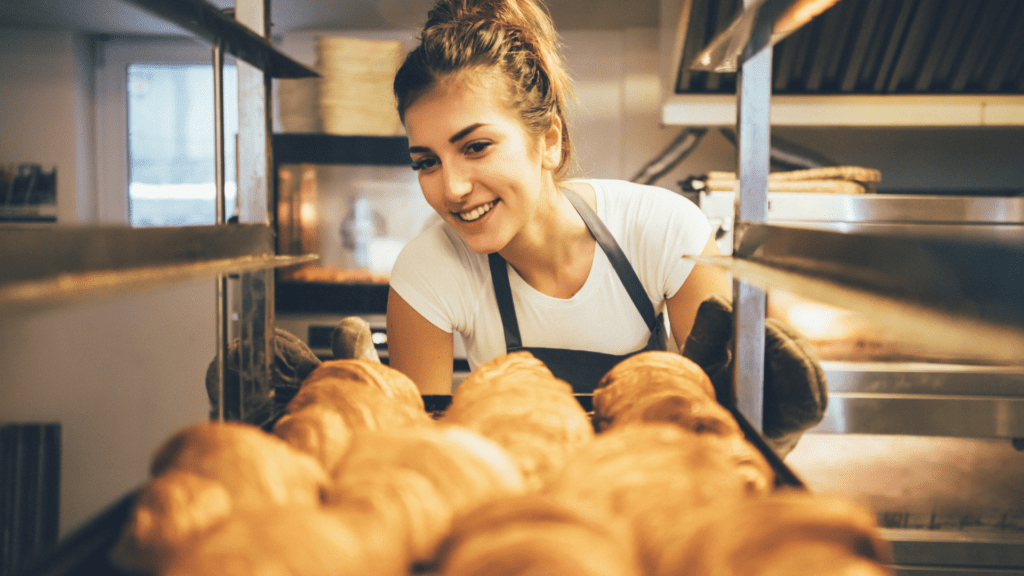Welcome to the delightful world of baking, where the aroma of freshly baked pastries and breads transforms any kitchen into a haven of warmth and comfort. If you’ve ever dreamed of creating pastries that rival those from a Parisian patisserie or baking bread with a crust that sings with each bite, you’re in the right place. In this guide, we’ll unveil insider techniques that will elevate your baking skills, turning your kitchen into a sanctuary of baking bliss. From troubleshooting common issues to mastering the art of creating irresistible pastries and breads, let’s embark on a journey that will leave your taste buds dancing with joy.
The Foundation: Quality Ingredients
Before we dive into the techniques, let’s start with the building blocks of baking bliss – quality ingredients. The fresher and higher the quality of your ingredients, the more profound the impact on the final result. Invest in premium flour, organic eggs, and real butter for a foundation that sets the stage for pastry and bread perfection. The essence of baking lies in the alchemy of ingredients, so choose wisely.
Mastering the Dough: A Symphony of Texture
1. The Perfect Yeast Activation
For bread enthusiasts, understanding yeast activation is a crucial step toward achieving that fluffy, well-risen loaf. Ensure your yeast is alive and ready by activating it in warm water with a pinch of sugar. The formation of frothy bubbles is a sign that your yeast is active and prepared to work its magic. Incorporate this lively yeast into your dough, and watch it rise to new heights.
2. Flour Power: Kneading Techniques
Kneading is more than just a step in the recipe – it’s an art form that directly impacts the texture of your bread or pastry. Whether you’re crafting a buttery croissant or a rustic baguette, the kneading technique is your secret weapon. Use the heel of your hand to push the dough away, fold it back toward you, and repeat. This process develops gluten, creating the structure that gives your bread its desirable chewiness.
3. The Science of Gluten Formation
Understanding the science behind gluten is essential for achieving the perfect texture in your bread and pastries. While gluten provides structure, too much can result in a tough end product. For flaky pastries, such as croissants, aim for minimal gluten development. In contrast, hearty artisanal bread benefits from a robust gluten network. Experiment with different flour types and hydration levels to strike the right balance for your desired outcome.
Troubleshooting Common Baking Woes
1. Soggy Bottoms: The Pastry Predicament
One common woe in the world of pastries is the dreaded soggy bottom. To avoid this, consider blind baking your pastry shell before adding wet fillings. Prick the base with a fork, line it with parchment paper, and fill it with pie weights or dried beans. Bake until the edges turn golden, and voilà – a crisp, flaky base ready to cradle your luscious fillings.
2. Bread that Refuses to Rise: Tackling Flat Loaves
Flat loaves can be a disappointment, but fear not – there are solutions. Ensure your yeast is fresh and active, proof the dough in a warm environment, and give it ample time to rise. Additionally, avoid over-kneading, as this can lead to a lack of structure. Follow these steps, and watch your bread rise to new heights, both literally and figuratively.
Innovative Techniques: Elevating Your Creations
Now that we’ve addressed the fundamentals, let’s explore some innovative techniques that will set your pastries and breads apart from the ordinary.
1. Laminating for Layered Pastries
The art of laminating involves creating layers of butter and dough, resulting in the delicate, flaky layers of pastries like croissants and puff pastry. Patience is key – allow the dough to rest between each fold to ensure optimal layering. The reward? Pastries with a heavenly combination of crispiness and tenderness.
2. Steam Magic for Crusty Breads
Achieving the perfect crust on your bread requires a touch of steam during the baking process. As the bread initially bakes, introduce steam into the oven by placing a pan of hot water on the lower rack. This moisture delays the formation of the crust, allowing the bread to expand fully before developing its crispy exterior. Say goodbye to lackluster crusts and hello to artisanal perfection.
3. Flavor Infusion: Pre-Soaking Fruits and Nuts
Elevate the flavor profile of your breads and pastries by pre-soaking fruits and nuts. Whether it’s raisins for a cinnamon swirl bread or apricots for a rustic loaf, soaking them in warm liquid (such as tea or juice) imparts moisture and infuses the ingredients with a burst of flavor. This simple step can turn a good recipe into a memorable one.
Artistry in Presentation
1. The Art of Piping: Elegance in Design
Enhance the visual appeal of your pastries with the art of piping. Whether it’s intricate designs on cakes or precise lines of cream in éclairs, a piping bag allows you to add a touch of elegance and creativity to your creations. Experiment with different tips and techniques to discover your signature style.
2. Decorative Scoring for Artisanal Breads
Transform your bread into a work of art by mastering the skill of decorative scoring. A sharp blade or razor allows you to create intricate patterns on the surface of your dough, not only enhancing its aesthetic appeal but also influencing the way it expands during baking. From simple crosses to elaborate designs, scoring adds a personal touch to your artisanal loaves.
Unleashing Flavor Variations: A Creative Exploration
Now that we’ve explored the essential techniques and troubleshooting tips, let’s embark on a creative journey of flavor variations that will transform your pastries and breads into a medley of delightful surprises.
1. Infused Sugars for Exquisite Pastries
Elevate the sweetness in your pastries by experimenting with infused sugars. Create your own by blending granulated sugar with aromatic ingredients like vanilla beans, citrus zest, or even lavender. Allow the sugar to absorb the flavors for a few days, and then use it in your pastry recipes for an extra layer of complexity. Infused sugars not only add a unique taste but also infuse a subtle perfume into your baked goods.
2. Savory Breads: Beyond the Sweet Realm
While sweet pastries often steal the spotlight, savory breads can be equally enchanting. Experiment with ingredients like herbs, cheese, olives, or sun-dried tomatoes to create savory masterpieces. A rosemary and Parmesan focaccia or a sun-dried tomato and olive artisan loaf can be a savory revelation, perfect for brunch or alongside a hearty soup.
3. Mashed Potato Magic in Bread Dough
For a softer crumb and a longer shelf life, consider incorporating mashed potatoes into your bread dough. The starches in the potatoes add moisture and contribute to a tender texture. This technique is particularly effective in creating sandwich bread or dinner rolls with a delightful fluffiness that will have your guests asking for your secret.
4. A Symphony of Spices: Spice-Infused Pastries
Take a cue from traditional spice blends around the world to infuse your pastries with warmth and depth. Experiment with combinations like cinnamon and cardamom for a Middle Eastern flair, or nutmeg and allspice for a comforting touch reminiscent of the holiday season. Spices not only add flavor but also tell a story, turning your pastries into a culinary journey.
5. Sourdough Extravaganza: Flavorful Additions
If you’ve mastered the art of sourdough, why not take it a step further by adding flavorful elements to your starter? Incorporate ingredients like roasted garlic, chopped herbs, or even sun-dried tomatoes into your sourdough starter for a unique twist. The result? A sourdough with layers of complexity that will have everyone asking for your secret ingredient.
Embracing Cultural Influences: Global Inspirations
1. French Patisserie Elegance: Mastering Choux Pastry
Transport yourself to the charming streets of Paris by mastering the art of choux pastry. Eclairs, profiteroles, and cream puffs become a canvas for your creativity. Experiment with different fillings, from classic pastry cream to exotic fruit-infused creams. The delicate balance of a crisp shell and a luscious filling will have you savoring the elegance of French patisserie in every bite.
2. Italian Finesse: Perfecting Tiramisu
Embrace the essence of Italy by perfecting the classic tiramisu. Layer delicate ladyfingers with a velvety mascarpone filling, and dust each layer with cocoa for an indulgent treat. Experiment with coffee variations, such as adding a hint of liqueur or trying different coffee bean blends, to tailor the flavor to your liking. Your homemade tiramisu will rival the best Italian pasticcerias.
3. Scandinavian Sweetness: Cinnamon Buns Extravaganza
Channel the cozy vibes of Scandinavia by diving into the world of cinnamon buns. Soft, pillowy dough swirled with a gooey cinnamon-sugar filling and topped with a decadent cream cheese glaze – these buns are the epitome of comfort. Add a sprinkle of cardamom for an authentic Nordic touch that elevates this classic pastry to a whole new level.
Conclusion: Your Baking Odyssey Continues
As you embark on this baking odyssey, remember that the world of pastries and breads is boundless, with endless opportunities for creativity and innovation. Whether you’re perfecting the classics or infusing your creations with global inspirations, each moment in the kitchen is a chance to explore, experiment, and, most importantly, enjoy the journey.
Baking is not just a skill; it’s a form of expression that allows you to share your love and creativity with others. So, continue to push boundaries, embrace new flavors, and let the joy of baking fill your kitchen with the sweet aroma of success. May your pastries be flaky, your breads be crusty, and your baking adventures be nothing short of blissful. Happy baking!


